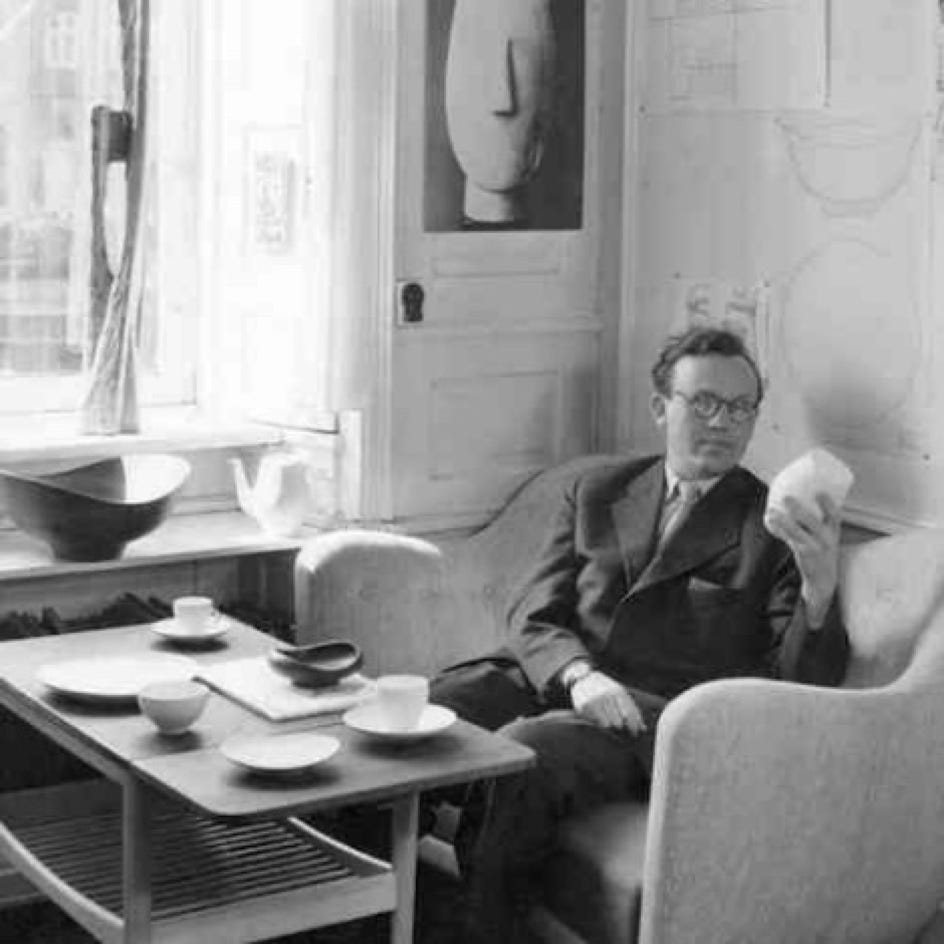20% OFF UNTIL JANUARY 31

The Nyhavn Dining Table by Finn Juhl, created in 1953, is a calm, elegant and practical piece of furniture, easy to maintain and destined to age gracefully. Its options allow it to be personalized, its extensions can be removed or simply hung at both ends. The top can be ordered in teak, oak, walnut, Oregon pine or black linoleum.
Recognized for the visual lightness of his creations, Finn Juhl was inspired by the very simple designs of his American counterparts, notably Charles Eames. He added his sense of functionality and detail, which gives a unique character to the Nyhavn table.
The orange and blue colors, characteristic of Finn Juhl's designs, come from Johann Wolfgang von Goethe's warm and cold color wheel.


Dimensions [170-278] x 85 x H72,5 cm
Materials Tabletop in veneer or linoleum with solid edges Painted frame in black, orange or light blue with wooden toes.
Nyhavn Table – 2 extension leaves included
from
Free samples
(against deposit)
oiled oak
black base
light blue base
orange base
oiled walnut
black base
light blue base
orange base
white oiled oak
black base
light blue base
orange base
oiled walnut + black linoleum
black base
light blue base
orange base
oiled oak + black linoleum
black base
light blue base
orange base
Finn Juhl

As a teenager, Finn Juhl (1912-1989) wanted to become an art historian, having a passion for the fine arts since childhood. His father stopped him and Finn Juhl started architectural studies. Later, when his fame as a designer of furniture acquired, he speaks of himself as an autodidact, in reference to this upset vocation that forced him to walk intellectually on a lonely way. His style owes much to this singular trajectory, with its non academic interpretation of art visible in his work. Finn Juhl started his studies in 1930, a key period which saw the birth of modern design and furniture.
His modern offices in central Copenhagen was greeting his visitors with a huge Japanese fish in paper, symbol of imagination. Rather than thinking in terms of practical construction, Finn Juhl had the mind-set of a sculptor, when he shaped a piece of furniture. In the 1940s and 1950s, this way of working had never been seen before. His ambition was to design furniture with movement and life.
Juhl took pride in making both the structurally supportive elements of the furniture and the seated person look as though they are floating. In some of his chairs, the backrest and the seat are almost invisibly joined, as if they were clouds floating through the room.
In creating his furniture, Finn Juhl worked with two elements: The carrying element, and the carried. He eventually became known for his special ability to separate the bearing parts from the borne. This is one of many examples of how he broke free from conventional working methods and found his inspiration in art.